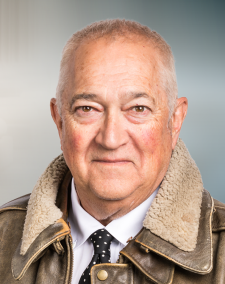
How U.S. regulation prevented off-label use of a drug and a subsequent birth defect disaster | Causes, Not Just Cases®
Off-label drug use
Off-label prescribing of drugs is unfortunately, and scarily, too common an occurrence. Thalidomide was widely prescribed off-label in the U.K. in the 1960’s for alleviating morning sickness before it was realized that thousands of pregnant women experienced tragic side effects, including birth defects and infant death. More recently, we have seen Zofran prescribed off-label for pregnant women suffering from nausea as well, which my colleague Kimberly Barone Baden wrote about in a blog last year.
As a new FDA Commissioner takes the helm, I can’t help but reflect on a time when the FDA stopped the dangerous drug thalidomide from being used with pregnant women.
Thalidomide babies in the U.K.
In the 1960’s an American doctor and FDA inspector enforced regulations that prevented the U.S. from what would become known around the world as the ‘Thalidomide tragedy.’ The ‘wonder drug’ gained rapid popularity primarily in the Europe and Australia in the early 60’s. Thalidomide was first introduced to the German market as a miracle sedative, the only non-barbiturate, over-the-counter tranquillizer of its time. The drug rapidly gained worldwide attention. It was commonly used to calm nausea and relax users, but lacked the harmful and addictive effects of barbiturates. That, combined with its easy over-the-counter access, gave the drug instant popularity among all types of people.
The product was marketed as completely safe for everyone, even claiming that researchers could not find a dose high enough to kill a rat. By the 1960’s, thalidomide was available in 46 countries, with sales nearly matching aspirin.
I recently read an article that reported it is now known that thalidomide caused more than 10,000 miscarriages, stillbirths and infant deaths in the United Kingdom alone. What is most shocking is that around 90 percent of those who were victims of the drug-induced defects did not fault their infantile deaths to taking the prescription drug during pregnancy.
It is also believed that the drug caused severe birth defects in 20,000 babies and led to the death of more than 80,000 infants around the world.
The beginning of the end - Thalidomide connected to severe birth defects
In addition to the drug being widely available an Australian obstetrician, Dr. William McBride ‘discovered’ that the drug also acted as a remedy for morning sickness and started recommending the off-label use to his pregnant patients, which rapidly gained popularity in many countries including Germany, Australia and Canada.
Dr. McBride soon began connecting severe birth defects to thalidomide use. Babies he was delivering suffered from severe birth defects, including deformed limbs, blindness and organ damage, as a result of the ‘cure all’ sedative he had been endorsing. By March 1962, the drug was banned in most of the countries where it had previously been widely accessible.
How the U.S. escaped the Thalidomide tragedy
U.S. FDA inspector Dr. Frances Kelsey is recognized as the skeptic that saved the U.S.
Despite tremendous pressure from pharmaceutical companies to approve the drug for sale in the U.S., she was doubtful after noticing that thalidomide had not been tested on pregnant animals as well as reports from around the world that exceptionally high numbers of women were giving birth to babies with crippling deformities and fatal flaws.
Dr. Kelsey was right to follow her instincts, upholding the FDA’s mission to protect and promote the health of the American people, using science for regulatory decision making.
Dr. Kelsey’s decision ultimately lead to the prevention of a public health catastrophe here in the U.S. and strengthened both the regulatory and scientific environments of the development and review processes for medical drugs and devices.
In response to narrowly escaping a U.S. thalidomide epidemic, Congress gave the FDA more power in 1962 over regulating the release of drugs in the U.S. and made key changes, giving the FDA oversight of clinical trials. Previously, ‘clinical trials’ involved companies providing drugs to doctors, who had their patients ‘test’ them. Then, manufacturers could put medications on the market only 60 short days after notifying the FDA.
Today, it can take longer than 10 years for a drug to be approved by the FDA and made available to the masses.
FDA new commissioner
In the 50 years since the thalidomide tragedy, the FDA has continued to work to protect consumers, but some have voiced concerns about the ability to regulate the industry. Most recently the FDA has been under the microscope for seeming to have a ‘business relationship’ with Big Pharma as opposed to a regulatory checks and balances system. The appointment of a new chief comes shortly after being criticized for having a ‘deregulatory moment,’ referring to opposing opinions on key authority elements, including how the agency approves drugs and devices.
The appointment is a chance for the FDA to begin a new era and ensure stringent and thoughtful regulations and approval processes.
I hope that the new FDA Commissioner will take a page from Dr. Francis Kelsey’s playbook and focus the FDA as a regulatory agency that can be commended for preventing public health disasters.